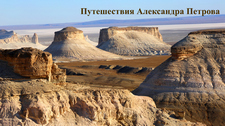You are here
Lake Aitali in Kakshaal-Too Range.

Glacial flow-through, freshwater lakes in western part of Kakshaal-Too Range.
"This was because we were better acquainted with their western parts, where glaciers are indeed very few, small, and hidden in high, inaccessible gorges. However, Mr. Semenov's explorations in 1856 discovered the existence of enormous glaciers in the eastern part and in the same direction beyond the area described. It should be noted, however, that most of the ridges in this region do not present the conditions necessary for glacier development."
V. Kaulbars. "Materials on Geography of Tien-Shan," 1869.
A study of glaciers in Kakshaal-Too Range.
Physical and geographical position of Lake Aitali.
A glacial, flowing, freshwater lake, Aitali, is located at an altitude of 3,814 meters above sea level. It lies in upper reaches of Aitali River, a left tributary of Uzengi-Kush River. It is located 700 meters southeast of end of Nalivkin Glacier tongue in Kyzyl-Asker mountain range, on northern slope of western Kakshaal-Too Range in At-Bashy district of Naryn region.
The lake extends 770 meters from north to south, reaches its greatest width in the central part of 440 meters, covers an area of 0.21 square kilometers, and has a shoreline of 2.31 kilometers. In the northern part of the lake, a moraine rises above the lake surface.
The headwaters of the Aitali River, originating from the Nalivkin Glacier, flow into the southeastern part of the lake. From the northwestern part of the lake, the river continues its course and soon disappears into the moraine. It's worth noting that the Aitali River disappears into the moraine for 1.2 kilometers, passing the moraine and flowing through a flat, wide valley for 2.3 kilometers.
Lake Aitali's special charm is given its striking bluish hue. This color is not a coincidence or an optical illusion, but the result of ancient glacial processes. The lake's water flows from a melting glacier, partially freed from moraine deposits. Along with the streams, it carries tiny particles of crushed rock - "glacial flour," created by millennia of ice movement over rock.
These particles scatter sunlight so that short wavelengths - blue and turquoise - are reflected more strongly than others. This makes the lake's surface seem to glow from within, reminiscent of a frozen sky melted by the sun. In the morning, the water appears milky turquoise, during the day it becomes a deep blue, and in the evening it takes on a deep steel hue, as if concealing the breath of the mountains.
Thus, nature preserves the memory of the glacier that gave life to this lake: as long as ice lives in the mountains, the waters of Lake Aitali will carry its cold reflection - the glow of eternal snow in the heart of stone. This high-altitude lake is hidden among harsh glacial massifs and moraine ridges, near the border with the People's Republic of China.
Through the Uzengi-Kush breach, the waters of these mountain rivers break through mighty ridges, continuing their journey into China, where they enter the basin of the great Tarim River.
Natural features of Lake Aitali.
Lake Aitali is a typical high-altitude lake of glacial origin. Its shores are composed of ancient moraines, forming a natural dam - a kind of embankment that holds the waters within the mountain basin. There is no basin as such, and the lake is a dammed reservoir formed by the retreat of the glacier.
All around lies the somber grandeur of Kakshaal-Too: rock fragments, glaciers, and rare patches of alpine flora, where even moss and lichen cling to life in the harsh wind. In summer, daytime fog prevails, while in winter, eternal silence and the blue of transparent ice reign.
Hydrology and origin of Lake Aitali.
The lake is primarily fed by melting snow and glaciers located higher up in the glacial valley. The waters are clear, transparent, and have a bluish tint - typical of glacial lakes. During periods of active melting, the water level rises, and in summer, when temperatures stabilize, it remains constant.
The water flows along the Aitali River bed, forming rapid streams that, joining the Uzeni-Kush River, carry life down the valley, nourishing numerous grass meadows and sedge marshes. The Significance and Research of Lake Aitali. Despite its remoteness and inaccessibility, the Lake Aitali region has attracted the attention of geographers and glaciologists.
The lake is of interest as an indicator of climate change in the high-mountain zone of the Inner Tien-Shan. The dynamics of its water level, moraine formations, and the structure of the dammed body help trace the history of glaciation in the region.
Legend of Glacial Lake Aitali.
Long ago, when the Kakshaal glaciers were young and untamed, a young man named Aitali lived in the Aitali Valley. He herded his herds, listening to the mountains blowing in the wind at night and the rivers singing of distant seas. Aitali was brave and strong, but his heart belonged to the daughter of an old hunter, Aruka, whose eyes sparkled like two mountain lakes in the sun.
However, disaster loomed over their happiness: the ancient spirit of Ice, guardian of the eternal snows, awakened in the mountains. He was angry with the humans for disturbing his domain, lighting fires, and grazing cattle near the glaciers. One day, Aital saw a huge chunk of glacier, like a living creature, sliding down the valley, threatening to bury all life.
Without hesitation, he took up his spear and climbed to the peaks to stop the Ice Spirit. The battle lasted all day and night. Thunder rumbled in the depths of the mountains, and the rocks cracked from the heat and cold. By morning, the wind died down.
When the shepherds climbed the valley, they saw a new lake - transparent, cold, like the breath of eternity. They say it was Aital who gave his heart to hold back the flow of ice. His love and strength transformed into the waters of the lake, and his name remained forever - Aitali, a lake born from the heroic deed of man and the wrath of the mountains.
And to this day, when the sunset paints the glaciers blood-red, people say:
- "This is the heart of Aital, shining through the water, reminding us that love and courage are stronger than the cold of time."
For people, Lake Aital is a natural sanctuary. It serves as a kind of boundary between the land of the living and the domain of the ice spirits, whose breath and cold preserve the memory of ancient times.
Geographic coordinates of Lake Aital are: N41°06'46 E77°29'04
Authority and photos by:
Alexander Petrov.







